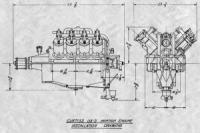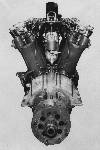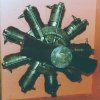Engines Before 1925
 |
The year 1925 marked a major turning point in aircraft engine development for two reasons. First, it was the year that Wright Aeronautical Corporation introduced the J-5 Whirlwind. Second, it was the year that the Pratt & Whitney Wasp first ran. These two engines were the start of a string of successful air-cooled engines that revolutionized the delivery of air mail, air transportation, Navy fighters, and air racing.
Before 1925, most successful engines had been liquid-cooled. They had also been heavy, temperamental, and not very reliable. Nevertheless, these anachronistic engines powered aircraft through the early years of aviation, through the First World War, and through much of the barnstorming era of the 1920s and 1930s. |
Selected Early Aircraft Engines Article Index
The engines discussed under this heading are noteworthy for their contributions to early aviation or their unique concepts.
They cover the period from aviation’s beginning until the mid-1930s.
|
A.B.C., Adams-Farwell, Aeromarine,
Ansaldo, Antoinette, Anzani,
Argus
|
Beardmore, Bentley, Benz
, BMW, Bristol, Bugatti
|
Cirrus, Clerget, Cosmos, Curtiss |
|
Darracq, De Dion, Detroit Aero,
Dodge, Duesenberg, Duthiel-Chalmers
|
Elbridge, Engineering Division, E.N.V.
|
Fairchild, Farcot, Farina,
Farman, Fiat, Fox
|
|
Galloway, Gnome, Gnome-Rhone,
Green, Gyro
|
Hall-Scott, Hansen & Snow, Harriman,
Heath-Henderson, Hiero, Hispano-Suiza
|
Indian, Irwin,
Isaacson, Issoto-Fraschini
|
|
Junkers
|
Kemp, Kessler, King,
Kirkham, Knox, Körting
|
Lawrance, Le Rhône, Liberty, Lorraine-Dietrich
|
|
Manly, Maximotor, Maybach
, Mercedes, Michel, Michigan Aero, Miller, Minerva, Morehouse, Murray-Willat
|
N.A.G., Napier, N.E.C, Novus
|
Oberursel, Oerlikon, Opel, Orlo, Otto
|
|
Packard, Panhard, Peugeot,
Pipe, Potez, Prini-Berthaud,
Pratt & Whitney
|
R.A.F., Rapp, Rausenberger,
Renard, Renault, R.E.P.,
Rheinische, Roberts, Rolls-Royce
|
Salmson, Sauda, S.H.K.,
Siddeley-Deasy, Siemens-Halske, Smith,
S.P.A., Sturtevant, Sunbeam
|
| Thomas, Tips, Tosi, Trebert |
Union, Universal Test Engine
Viking, Vivinus |
Walter, Warner, Wells-Adams,
Werner & Pfleiderer, Western,
Willis-DePalma, Winterthur,
Wolseley, Wright Brothers, Wright Aero
|
A Wolseley Motor That "Never Was" – The Hispano-Suiza 'Viper' W-12 Aero-Engine
by Jerry Wells
(Mr. Wells is seeking more information on this engine. If you can add to the story, please email the webmaster.)
Engine Development Through WWI
Aircraft Engine Development circa 1923
The Aeromarine/Robinson R-13 "Cootie" Airplane and Engine
Aircraft Engines and Strategic Bombing in the First World War
by Todd Martin
Published: 27 Jan 2016
New England Air Museum’s Lawrnace J-1 Restoration
The Siemens-Halske Sh3 Differential Rotary
Humber 3-Cylinder
This original 30 hp 3-cylinder Humber is a real rarity. Based on the Anzani design, it flew in a licence built Bleriot monoplane in 1910. (John Northall)
Dave Birch has shared the following images of documents at The United Kingdom National Archives at Kew.
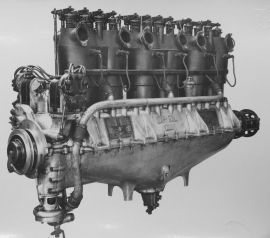 |
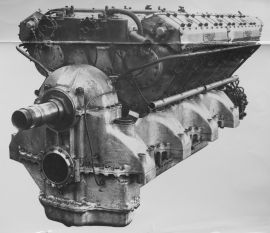 |
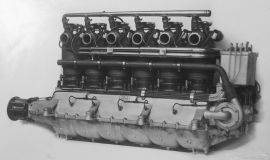 |
| Opel Type III |
Siddeley Tiger |
90hp Beardmore, which was a
license-built Austro-Daimler |
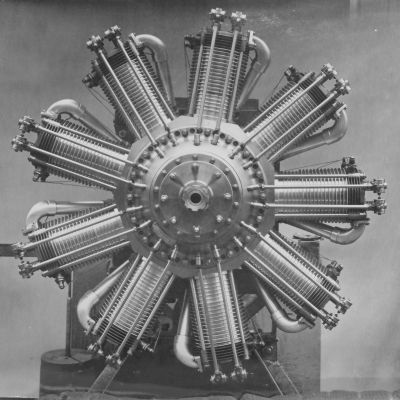 |
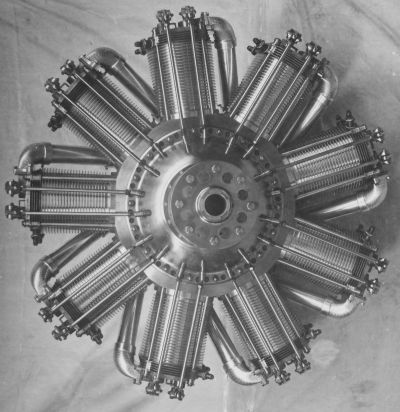 |
| Bentley BR.1 |
Bentley BR.2 |
Cosmos Engines Brochure, c 1919
WW1-Era Engine Images
Aircraft Engine Installation Drawings (Members Section, Installations)
A collection of installation drawings released for historical reference by the U.S. Army Aeronautical Museum in 1924 as Miscellaneous Report No. 380.
Included are the Aeromarine U-8-D, Curtiss C-12, Curtiss C-6, Curtiss OX-5, Curtiss V-2, Engineering Division W1-A, Hall-Scott L-6, Hispano-Suiza Model K, Lawrance J-1, Lawrance L-4, Lawrance R-1, LeRhone 100HP, LeRhone 80 HP Model C, Liberty 12, Liberty 6, Packard 1A-1237, Packard 1A-2025, Packard 1A-744, Packard 1A-825, Rausie E-6, Union 125HP Airship Engine, Wright Model A, Wright Model E, Wright Model H, and Wright Model I. The Curtiss OX-5 drawing (left) is representative of the lot. There are two drawings for many engines.
Aircraft Engine Specifications circa 1924
Notes on WWI German Superchargers
by Paul Dempsy
Salmson P-9
From the Museum VHU Praha-Kbely, Czech Republic, photographs by Milo Holba. This 9-cylinder water-cooled fixed radial was rated at 150 hp @ 1,300 rpm. With a bore of 125 mm (4.921") and a stroke of 140 mm (5.512") the Salmson P-9 displaced 15.46 l (943.55 in³). Over 1,200 were produced during 1915 and 1916 and were used mostly in Voisin airplanes.
Salmson Z-9
 |
Curtiss OX-5 (303 KB PDF)
The Curtiss OX-5 has the distinction of being the first mass-produced aircraft engine in the United States. First available in 1915, it served in trainers through World War I, continued to be produced by Curtiss as well as other licensees until 1918 or 1919, and then powered a veritable explosion in general aviation after the end of the war and for a decade to follow. |







